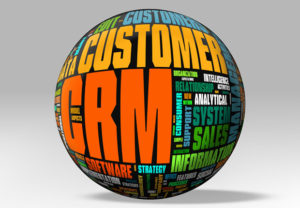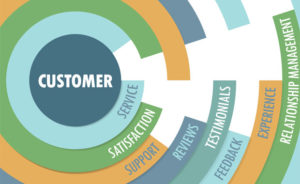More than a quarter of marketers went into marketing because they wanted to be creative, researchers have found. So why do so many B2B marketing efforts seem exactly the same?
The reason, in part, is that some things work well. In nature, convergent evolution leads different kinds of organisms to similar solutions when they work. The number of strategies that will lead to success is limited.
Marketers don’t simply echo the successful efforts of other marketers, though — they also parrot things that don’t really work.
You’d think in this era of analytics that marketers would be ruthless in killing off ineffective strategies. Marketers are often inexplicably fond of some of them, though, and they cling to them beyond the point of logic.
Writers understand this: The expression, “kill your darlings,” often is used to coach writers to exclude content or quotes they love if they interfere with the effectiveness of the story. It is a cruel business. So is marketing.
Here’s a sampling of some marketing darlings that need killing.
The ROI Calculator
Companies have target customers — types of buyers or businesses that are more likely to close and turn into long-term customers with tremendous lifetime value. However, to your ROI calculator — that simple little Web application that asks visitors for numbers and spits out an ROI number in return — every buyer is an ideal customer.
“Has anyone ever seen an ROI calculator that returns a negative number?” asked Greg Tapper of Topo at his company’s recent summit in San Francisco. “No! They all say that every investment always pays off, every time.”
There’s the problem: ROI is not simple. It isn’t based solely on the vendor information, or on information available to the vendor. Integration costs, the impact of implementation on employees’ work, and opportunity costs imposed by downtime are rarely part of the equation. Buyers get this: Why would the vendor include factors that would dim the rosy picture they want the buyer to see?
Buyers typically are not dumb. If an ROI calculator is offered, their assumption is that it is biased in favor of the business offering it, and that assumption is nearly always correct.
If you value buyers, be honest with them. Instead of a simplified spreadsheet that will deliver a positive number every time, give buyers something more open-ended — something that allows them to do a truthful examination of costs in their particular business context.
Suggestions about potential expenses allow buyers to consider their own situation and to draw real conclusions about the financial implications of a purchase. Buyers will appreciate your guidance — and when some get good ROI numbers they’ll be more likely to become ideal customers that stay with your business over the long term.
Forms vs. Funnels
It’s still very hard for some marketers to give content away for free. It costs money to make, so it’s best to stick a form in front of it to understand whether it’s delivering any return on investment, right? Without a coherent strategy about which content buyers should be able to access without filling out a form, the tendency is for everything to go up behind forms.
That creates a nearly un-navigable set of content that irritates readers and drives them to competitors. The good news is that you’ll know exactly how many forms a buyer will fill out before abandoning your site.
Some content should be ungated — ideally, material you’re using to educate the market, leading to better-informed buyers who are further along in the buying journey before they engage with you. If that’s the case, why are you forcing readers to fill out forms before they get the education they’re looking for — education that ought to help them put you on their shortlist?
To avoid the form-fill fiasco that hamstrings so many companies’ Web pages, identify where content falls on the funnel and establish the line that suggests a buyer who’s ready to purchase. Put content that corresponds to the bottom of the funnel behind a form — and figure out a way to shield buyers from additional form prompts after they’ve filled one out the first time.
Conversely, use a portal approach to make all content accessible via a unique password established upon a customer’s first interaction with your content. That will make buyers feel like they have gained the privilege of special access — and it will enable you to see the entirety of their interactions with content, allowing you to map their journeys with accuracy and completeness.
Booth Visit Does Not Equal Eager Buyer
Events are great opportunities for marketers to balloon their lead pipelines, and there’s nothing wrong with the idea of adding as many contacts to the list as a company can when it’s spending big bucks for trade show floor space. That said, those contacts need a bit more context before they can be taken seriously as leads.
If the business is trading a badge scan for some swag, there’s a fairly good chance that many of those scans are connected to swag hunters, not people ready to buy. By the same token, when people who are ready to buy stop at a booth, often they are not steered toward someone in sales or noted as contacts who have expressed some degree of buying interest. Boop! Their badges get scanned and dumped in the virtual hopper with the rest of the looky-loos.
The aftereffects can be big lists of contacts (often mischaracterized as “leads”) that the sales development team has to call through to understand their position in the buying process. The pipeline shrinks as the sales development reps disqualify people, yielding a small percentage of contacts that are worth forwarding to sales.
Instead of basing success on the number of badge scans snagged at the both, change the metrics and tactics, and begin looking at the conversations your sales team is having at each event.
Scanning isn’t enough. Buyers should be engaged and guided to the right experts for their interests. You may leave the show with fewer new names, but they will have a much higher close rate than the random scans, and their show experience will be much better. You’ll also spare the SDRs the thankless task of calling through 3,000 names to get 25 possible customers, allowing them to focus on contacts from other sources.



























































Thank you for such a nice article, yes i AM completely agree with you, marketer should target the right audience and should not just copy other marketers techniques, its good to be little creative this will pay you somehow.